Agent of Change: A Q&A with GLAAD’s Sarah Kate Ellis
After a year as the head of GLAAD, Sarah Kate Ellis looks to close the culture gap between equality and acceptance

For Sarah Kate Ellis, two covers of Time magazine — one from the birth of the gay rights movement, the other from the height of the culture wars of the 1990s — sum up how far LGBT people have come in their portrayals by the media.
In 1966, Time published a cover story titled “The Homosexual in America.” The story explored the prevalence of gay people in every walk of life, all while framing homosexuality as a disease. “It is a pathetic little second-rate substitute for reality, a pitiable flight from life,” the story stated. “As such it deserves fairness, compassion, understanding and, when possible, treatment. But it deserves no encouragement, no glamorization, no rationalization, no fake status as minority martyrdom, no sophistry about simple differences in taste — and, above all, no pretense that it is anything but a pernicious sickness.”
If anything, the story was a clear demonstration of just how much work needed to be done to properly tell the story of gay people to their fellow Americans. Thirty years later, in 1997, times, and Time, had changed. Although gay people were far from universal acceptance — the Defense of Marriage Act had become law the previous year — when Ellen DeGeneres came out, the magazine addressed the revelation with passivity. “Yep, I’m Gay,” the cover read with a photo of DeGeneres.
“When you look at that span of time, when being gay was a disease and an illness to the time when it’s celebrated and it’s understood, it’s a part of who we are. I think we’ve come a very, very long way,” says Ellis, who marks her first year as the president and CEO of GLAAD this month. A veteran of several magazines who worked at Time Inc., the 43-year-old used to conduct a tour of Time‘s archives during Pride Month where she would compare the two covers.
“GLAAD’s original purpose when we started was really as a watchdog, to be a measuring stick for the media and keep them honest and to change the representation of LGBT people in the media. There’s an absolute shift where media is way more friendly now and we partner more,” she says. “There’s still issues that pop up, but the media and the coverage wants to portray LGBT people in a positive light more often than not and that wasn’t the case — it was the inverse 30 years ago.”
With public policy on LGBT equality moving at an extraordinary pace, Ellis is setting her sights on ensuring the gap between policy achievements and cultural acceptance is not forgotten. And now, with the Supreme Court having agreed to rule on the right of same-sex couples nationwide to marry, that culture gap could prove dangerous, says Ellis.
“It was a really exciting year to step in to GLAAD,” she adds. “At a time when we have this great momentum around policy and visibility for the LGBT community and to take that and accelerate everyday acceptance is very exciting.”
METRO WEEKLY: What brought you to GLAAD?
SARAH KATE ELLIS: My career was in media prior to coming to GLAAD. I spent about 17 years at various magazines, launching and relaunching, turning around. I’ve worked at every magazine from Vogue and InStyle to launching Real Simple, relaunching Condé Nast House & Garden. When I finally left I was overseeing about 12 magazines and digital properties at Time Inc. called the lifestyle group.
And I’ve known GLAAD for a long time in my role in media. My wife and I wrote a book about our dual pregnancies — we got pregnant on the exact same day. And we wrote that book. And before the book came out, I called GLAAD when our media tour was being set up. I realized I wasn’t prepared, so I came down to GLAAD and they trained me. They helped us understand how to handle the press and how to talk about our family and being gay. It was very, very helpful. When this opportunity came up I just thought it was a perfect combination of both my media experience and my advocacy. I’ve been an advocate my entire adult life.
When I was at Time, Inc. I was the chairman at Out at Time, Inc., so I had been heavily involved. At one point, when DOMA was overturned, my wife and I were on the cover of Time magazine, kissing. We had to call the family for that to let them know that was coming out [Laughs]. “We’ll be kissing, but we’re married!” It’s been a long history of both media and advocacy, and GLAAD is kind of the dream job. It’s more a calling than a job, honestly.
MW: You mentioned advocacy as being part of your adult life. What sparked that?
ELLIS: I grew up on Staten Island, one of the boroughs of New York. The forgotten borough. But I had a really strong role model who was my mom, who had me marching on Washington for women’s rights. At a very young age, I learned that you have to stand up for yourself. So when I came out, it was just a natural thing. The year I came out — I was 20 or 21 — it was the big march in Washington, I think it was 1993. And a bunch of my friends and I drove down to march. So it has always just been inherent in me and it’s something that I guess in my family has been passed down from generation to generation. I always believed in fighting for equality and diversity and inclusion in this country.
Especially when you become a parent, you have to be vigilant because now you’re responsible for the future of your children and the world you’re creating for them. My wife and I have twin 5-year-olds, or we call them twins. We each had one. Since that happened I feel like I’ve really amped up my advocacy.
MW: You both got pregnant on the same day?
ELLIS: A doctor said to me that I had a better chance of being hit by lightning than that actually happening when you look at the odds. What had happened is I had been trying to get pregnant for a long time, unsuccessfully, and at some point my wife, who is a musician, was finally not touring and off the road. I just said to her, “You need to try and start, too, because this is not going like we planned.” It was not as smooth as we thought it was going to be. With both trying at the same time, it happened. We were shocked by it. We were hoping one of us would get pregnant and we could move on from there and the next one would start trying after the baby was born, but it happened at the same time. It was an instant family.
MW: That’s crazy.
ELLIS: It was really crazy. It was really fun being pregnant together.

MW: Were your kids both born around the same date?
ELLIS: They were due at the same time, in the middle of the month. My son, Thomas, came on February 1 and my daughter, Kate, who I gave birth to, came on February 24, so we call them the February bookends. Kristen gave birth first — she was early. I was nine months pregnant driving her to the hospital. It was pretty crazy. And then once I experienced being in the room of a real live birth, I swear my body just shut down. I was like, “I’m not letting that happen to me.”
MW: Is that what inspired you to write a book about it?
ELLIS: I was at Real Simple and the editor, Kristin van Ogtrop, is a friend. She said she really would want to follow the story and I thought, “Real Simple reaches 8 million women in this country, most of who are the movable middle. What better way to help shine a light on what new and evolving families look like?” So they followed us through our nine months. Simon & Schuster was really interested in that story, so we wrote it from there.
MW: When were you first aware of a gay character in film or TV? What effect did it have on you?
ELLIS: I’m going to really date myself here: It’s a tossup between Peppermint Patty and Jo Polniaczek on Facts of Life. I don’t know what I was registering with Peppermint Patty, but with Jo Polniaczek I definitely wanted to be her girlfriend, be with her everyday and sit next to her everyday.
MW: When did you finally equate those feelings with being gay?
ELLIS: Not till I came out, actually. I remember in high school my brother saying, “You’re gay.” He knew and I had no idea. In high school, and even through college, I just did what I thought I was supposed to do, which is date all these guys. And they were nice, but all my friends were so excited about going on a date with a guy and I was like, “Sure, I’ll go out.” I wasn’t excited about it. And then the lightbulb went off in my senior year of college. I had just broken up with a boyfriend and I was like, “I get nothing out of that. I might as well be dating a piece of cardboard.” I knew lesbians, I knew plenty of them and I loved them and would go out with them and stuff like that. I grew up in a very conservative area so it never even occurred to me that that could be me. I thought to myself, “Maybe I should try dating a girl.” Then it all made sense.
MW: When did you meet Kristen?
ELLIS: We were in the West Village of Manhattan for the early part of the ’90s and kind of ran in the same circles, but we didn’t particularly care for each other. Then she and I went our separate ways and met back up about six years later in 2005. Then it was instant after not having seen each other for a long period of time. And we would’ve been married two years later if we could have been. We were domestic partnered, and got married when it was legal in New York in 2011. We were the first Episcopal wedding in New York state.
MW: Are you a person of faith?
ELLIS: I was raised Roman Catholic but couldn’t sit by that. My mom is Roman Catholic, my dad is Episcopal, so we ended up joining the Episcopal Church. And we’re raising our children at the Episcopal Church, too.
MW: There seem to be a number of people who don’t believe religion and the LGBT community can be compatible.
ELLIS: As someone who understands cultural narratives, I think the cultural narrative right now is that they are mutually exclusive — that you’re either LGBT or you’re a person of faith. And I think that disregards millions of Americans, both who are faithful and supporters and allies of the LGBT community, and also LGBT people who are people of faith. It’s a destructive narrative and we’re working very hard on that.
GLAAD came out in September with a midterm election campaign on faith where we worked with the media to start to break down the barriers on having conversations about LGBT people and people of faith, and that they are joined communities. If you’re Mormon you can be LGBT or you can be LGBT and Mormon. There are communities of faith in every group. We’re working very hard to try to shift that narrative.

MW: You’ve been at GLAAD for a year now. What’s your proudest accomplishment in that time?
ELLIS: Surviving? No, I’m kidding. The first one is really personal for me — the Saint Patrick’s Day Parade. It’s a parade I marched in with my parents my whole life until it became exclusionary. There have been so many activists that have been working on the Saint Patrick’s Day Parade for years and to step in and be able to help move that along in a positive direction from a GLAAD perspective felt like a momentous moment for me, because it was so personal and so important. It’s a 253-year-old institution that was created because the Irish community was being discriminated against and now here it was discriminating against Irish LGBT people. So to have an impact on that felt pretty amazing. But we are still working on it to bring full inclusion. It’s not done by any means, but it was definitely a big step in the right direction for the first time.
On the flip side of that, from a business leader standpoint, I think that stabilizing GLAAD and getting GLAAD very mission focused, getting our program work mission focused and getting to a really good financial place has been a huge achievement of mine and the team in the first year.
MW: Is there anything that’s surprised or disappointed you?
ELLIS: It’s pretty amazing to see how much more work we have to do. It was something I started noticing as I was going around the country and meeting with all different kinds of people — from community leaders, movement leaders to political leaders to corporate leaders — is that there’s this current narrative about marriage equality and seeing policy moving so quickly in such a short period of time. What I started to get concerned about was how quickly is culture or public opinion moving along with that and is policy outpacing cultural momentum, creating a dangerous culture gap.
We did some research around that, which will be released in the next month or so, asking questions that have never been asked before to find out how Americans really feel about the LGBT community. That was surprising as well. A little disheartening, but the great thing is I’m an optimist and I think we can accelerate acceptance in this country if we do it right — and GLAAD is a perfect organization as a cultural change agent to do that.
MW: What do you hope to achieve at GLAAD?
ELLIS: My biggest achievement, I hope, will be accelerating acceptance in this country, closing a culture gap and really creating a world where the LGBT community can live freely. And by freely I mean can walk down the street and hold each other’s hand and not think twice about it.
MW: How do you get there?
ELLIS: There is a path to that point and that’s what we’ve been laying out through our program. GLAAD’s belief is that we can close that cultural gap by bringing allies along with us. By identifying them, engaging them, and activating them, we’ll have more boots on the ground than we’ve ever had before. We are actively putting together an ally initiative that will hopefully engage a good portion of Americans. We brought in a gentleman named Zeke Stokes as vice president of programs and he and I have been working very closely to align the program around the concept of closing the cultural gap. So all of our programs from our trans visibility to our southern voices are all laddering up to raising visibility, growing acceptance across the country.
MW: Aside from the Saint Patrick’s Day Parade, we’ve also seen GLAAD engaged with things like the Boy Scouts’ ban on gay youth. Is that something we should expect to see more of?
ELLIS: The thing about GLAAD is that all of our work is through the media. All of those projects or programs were all done through media campaigns. The way I look at us is that we are a cultural change agent, the way that we do it is through the media because it is the most effective, efficient and scalable way to get the biggest change done. For instance, the Boy Scouts program, that was a media campaign. We partnered with Scouts for Equality and they did the policy piece of it, our job is raising visibility around the issue, gathering mass acknowledgment of the issue and then being able to make the issue relatable to everyday people. A lot of times our work is not as cut and dry as a policy move. We might start a campaign, but it never has our name attached to it and it’s a media campaign.
MW: How does GLAAD interact with journalists and entertainers? What happens behind the scenes?
ELLIS: I would say 80 percent of our programs and campaigns now are proactive, like our Southern Stories campaign. We’re down there to grow the visibility of southern stories, both the triumphs and the trials of the LGBT community there, to build awareness to help move the policies that are being sought out. There is a portion of our work that is a little bit more responsive, like the recent TLC show, My Husband’s Not Gay, where we work in front of and behind the scenes. We’ll come out with a statement on why we think a show like that is irresponsible or destructive and can harm youth especially, but we’ll also have conversations behind the scenes to try to get it to a place where we can help move culture forward.
MW: Do you think there will ever be a time when GLAAD isn’t necessary or do you think there will always be a need for a media watchdog for the LGBT community?
ELLIS: When you think of us as more than watchdogs but as cultural change agents, you realize really quickly that GLAAD will never go away. I think the watchdog aspect of it over the years based on visibility and almost 30 years of work we’ve done has gotten so much better. But you look at the GLAAD Studio Responsibility Index, it’s dismal the representation of LGBT characters in studio releases. Mainstream Hollywood films still contain few depictions of LGBT people that actually go beyond the stereotypical humor, or even offensive depictions. They are sort of stuck in the old way, if you will, and that’s particularly important as Hollywood films remain one of our most widely seen and influential global exports. One of America’s biggest cultural exports is Hollywood films, so I think the studios need to bring these LGBT depictions into the modern day. And we’re not there yet.
So there is quite a bit of work to be done. But look at the trans visibility right now. It’s exploding, which makes me really proud that we’re heading in that direction. But we do a tremendous amount of work on that behind the scenes, whether or not it’s consulting on shows or films or a lot of people just call us for their HR groups because it’s such a big topic now and they want to know how to navigate it properly.
MW: It’s extraordinary the number of transgender characters who are being portrayed in a positive light. We just saw the wins for Transparent at the Golden Globes. How did that change so quickly?
ELLIS: It’s been years and years of work. It feels like an instant. Streaming services have been very cutting edge — the Netflix and Amazons of the world — and don’t live by the same standards as TV networks in terms of ratings and all. I think that has helped us as well. As content has become more diversified, as well as the platforms it is released on, it gives creators more ability and freedom.

MW: Do you think these shows are playing a role in shifting public acceptance?
ELLIS: Absolutely. Why we come to work every day is to make sure there are positive images out there. So not only the kids who are LGBT who are struggling with coming out are able to see that — because to be it, you need to see it — but also to change the hearts and minds of Americans around LGBT people.
MW: There’s been an increase in films relating to HIV and AIDS in recent years, particularly at a time when those issues don’t seem to get the same kind of attention from the LGBT advocacy world.
ELLIS: It’s very interesting that you bring that up because we have a renewed commitment to building visibility around HIV and AIDS. There has been significant rise in the thousands of people of color with HIV. We say around the office that we need to put our red ribbons back on and the visibility is a really important piece of that. We will be announcing in about a month a significant partnership around creating more dialogue on AIDS and HIV.
GLAAD was started 29 years ago around the HIV/AIDS epidemic, specifically we started with The New York Post in mind because their coverage was an abomination. So it’s part of our foundation and we really are stepping back up and stepping back in to gain visibility on this.
MW: There was also a time when there seemed to be a negative reaction to gay villains in TV and movies. That no longer seems to be the case.
ELLIS: The important thing is LGBT villain story lines — it doesn’t reduce the character to being evil because of being LGBT. It’s just another facet of their identity, and we all know human beings are multidimensional. So it’s refreshing to see that reflected in the wide range of television characters that exist today.
MW: Do you think there is any room for anti-LGBT voices in media?
ELLIS: I think it’s about responsible journalism and it’s about responsible coverage or programming. As far as the TLC show, when you look at medical experts refuting for years now that it’s a choice to be gay or that reparative therapy is dangerous and then you have shows or journalists reporting that it’s not, that it’s something you can do, that it’s a choice, I think that’s where it falls into irresponsible journalism and using your platform to push irresponsible content.
MW: The other example I think of is the controversy over Duck Dynasty, where it wasn’t so much talking about reparative therapy but just being homophobic. What about those voices?
ELLIS: They build an audience and a platform and then use that platform to come out against the LGBT community and create environments that are hateful and dangerous. I think that’s irresponsible as well.
MW: Does it all come down to LGBT youth?
ELLIS: Absolutely. There’s so many LGBT kids in this country who are isolated, who aren’t living in the big urban cities. And even in the big urban cities there are kids who are living in small communities who are isolated, so when we come to work everyday, when we take on something, we have the kids in mind. When we know eight out of ten LGBT youth are being bullied, that the homeless rate for LGBT kids is 40 percent across this country, there’s an absolute problem there. And yes, we feel like we’re protecting the kids.
View the entire list of GLAAD Media Award nominees. Winners of the GLAAD Media Awards will be announced in Los Angeles on March 21 and New York on May 9. Visit glaad.org to learn more.
Support Metro Weekly’s Journalism
These are challenging times for news organizations. And yet it’s crucial we stay active and provide vital resources and information to both our local readers and the world. So won’t you please take a moment and consider supporting Metro Weekly with a membership? For as little as $5 a month, you can help ensure Metro Weekly magazine and MetroWeekly.com remain free, viable resources as we provide the best, most diverse, culturally-resonant LGBTQ coverage in both the D.C. region and around the world. Memberships come with exclusive perks and discounts, your own personal digital delivery of each week’s magazine (and an archive), access to our Member's Lounge when it launches this fall, and exclusive members-only items like Metro Weekly Membership Mugs and Tote Bags! Check out all our membership levels here and please join us today!




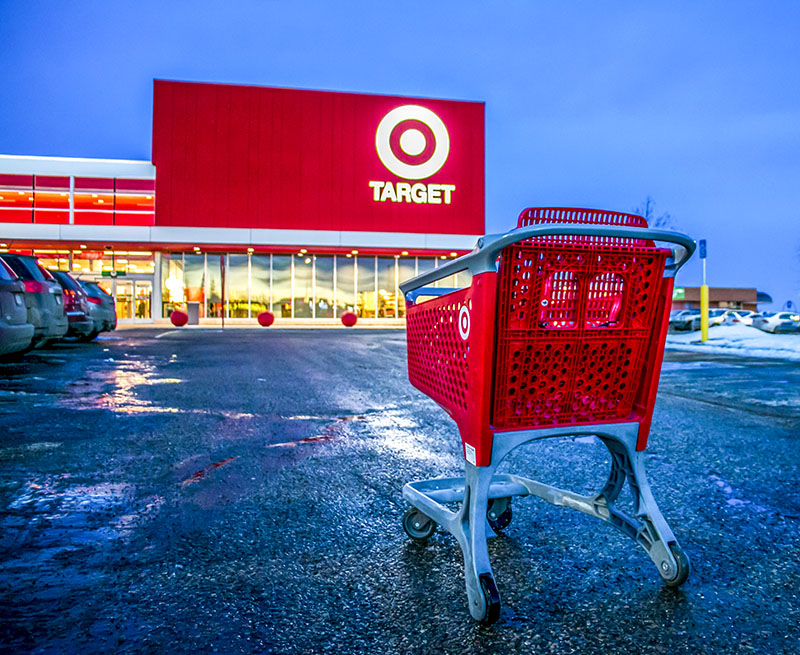
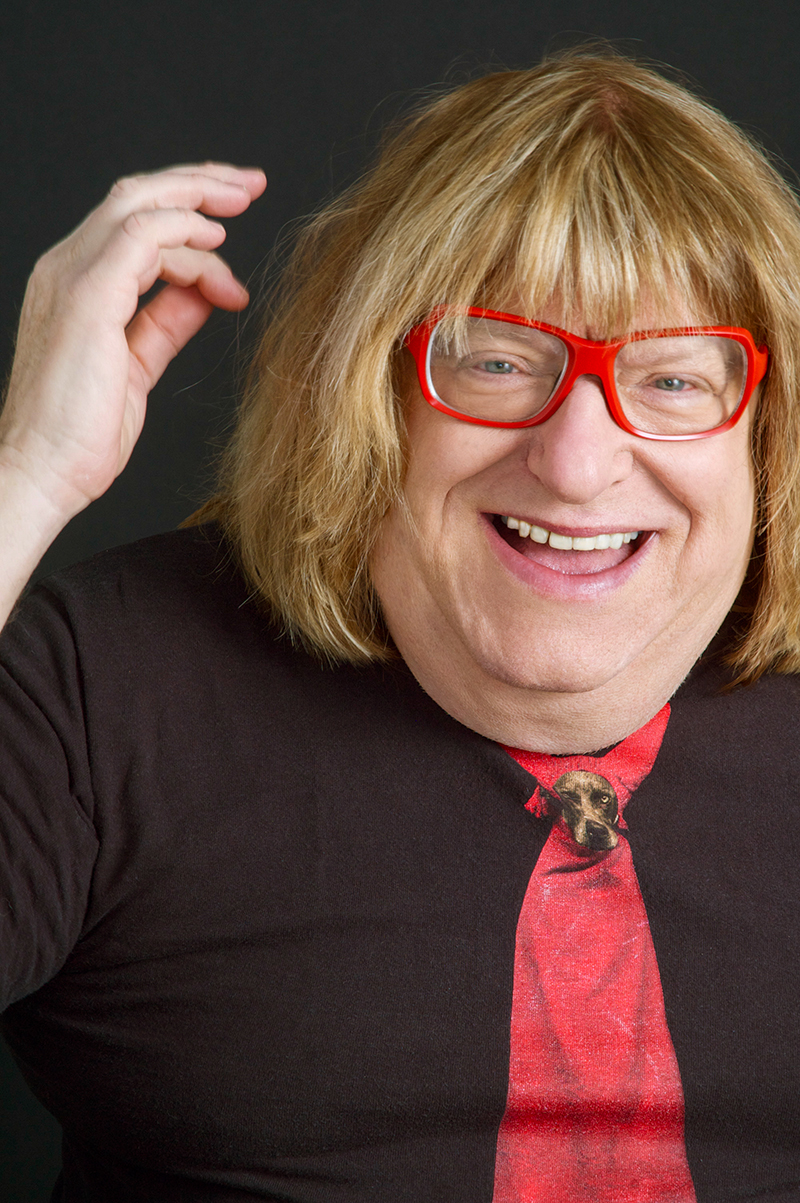
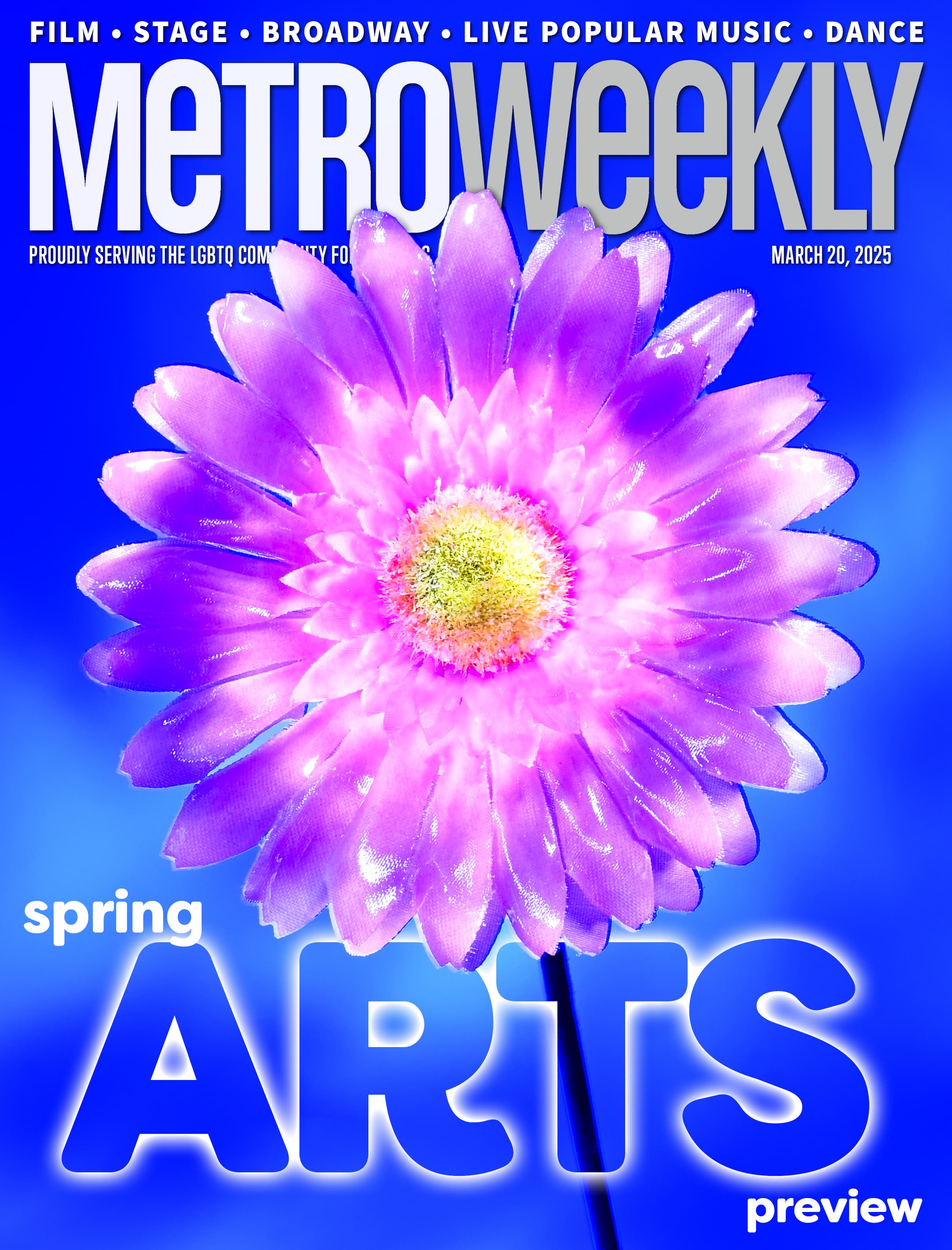












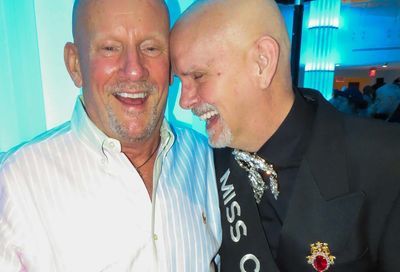
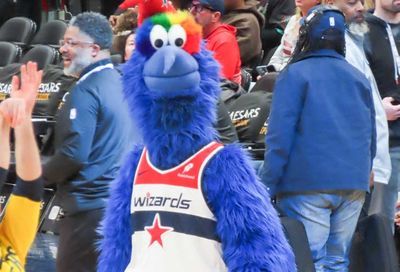
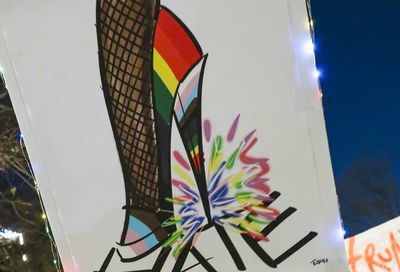
You must be logged in to post a comment.